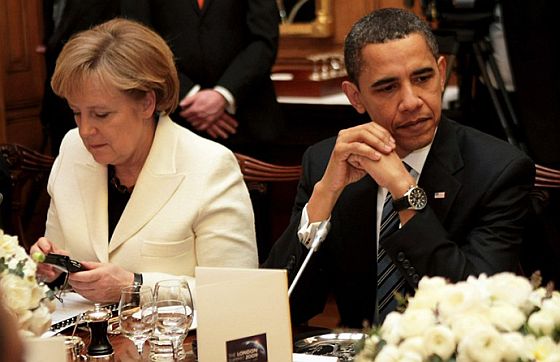Automation takes many forms and as members of a culture that reveres technology, we generally perceive automation in terms of its output: what it accomplishes, be that through manufacturing, financial transactions, flying aircraft, and so forth.
But automation doesn’t merely accomplish things for human beings; it simultaneously changes us by externalizing intelligence. The intelligence required by a person is transferred to a machine with its embedded commands, allowing the person to turn his intelligence elsewhere — or nowhere.
Automation is invariably sold on the twin claims that it offers greater efficiency, while freeing people from tedious tasks so that — at least in theory — they can give their attention to something more fulfilling.
There’s no disputing the efficiency argument — there could never have been such a thing as mass production without automation — but the promise of freedom has always been oversold. Automation has resulted in the creation of many of the most tedious, soul-destroying forms of labor in human history.
Automated systems are, however, never perfect, and when they break, they reveal the corrupting effect they have had on human intelligence — intelligence whose skilful application has atrophied through lack of use.
Nicholas Carr writes: On the evening of February 12, 2009, a Continental Connection commuter flight made its way through blustery weather between Newark, New Jersey, and Buffalo, New York. As is typical of commercial flights today, the pilots didn’t have all that much to do during the hour-long trip. The captain, Marvin Renslow, manned the controls briefly during takeoff, guiding the Bombardier Q400 turboprop into the air, then switched on the autopilot and let the software do the flying. He and his co-pilot, Rebecca Shaw, chatted — about their families, their careers, the personalities of air-traffic controllers — as the plane cruised uneventfully along its northwesterly route at 16,000 feet. The Q400 was well into its approach to the Buffalo airport, its landing gear down, its wing flaps out, when the pilot’s control yoke began to shudder noisily, a signal that the plane was losing lift and risked going into an aerodynamic stall. The autopilot disconnected, and the captain took over the controls. He reacted quickly, but he did precisely the wrong thing: he jerked back on the yoke, lifting the plane’s nose and reducing its airspeed, instead of pushing the yoke forward to gain velocity. Rather than preventing a stall, Renslow’s action caused one. The plane spun out of control, then plummeted. “We’re down,” the captain said, just before the Q400 slammed into a house in a Buffalo suburb.
The crash, which killed all 49 people on board as well as one person on the ground, should never have happened. A National Transportation Safety Board investigation concluded that the cause of the accident was pilot error. The captain’s response to the stall warning, the investigators reported, “should have been automatic, but his improper flight control inputs were inconsistent with his training” and instead revealed “startle and confusion.” An executive from the company that operated the flight, the regional carrier Colgan Air, admitted that the pilots seemed to lack “situational awareness” as the emergency unfolded.
The Buffalo crash was not an isolated incident. An eerily similar disaster, with far more casualties, occurred a few months later. On the night of May 31, an Air France Airbus A330 took off from Rio de Janeiro, bound for Paris. The jumbo jet ran into a storm over the Atlantic about three hours after takeoff. Its air-speed sensors, coated with ice, began giving faulty readings, causing the autopilot to disengage. Bewildered, the pilot flying the plane, Pierre-Cédric Bonin, yanked back on the stick. The plane rose and a stall warning sounded, but he continued to pull back heedlessly. As the plane climbed sharply, it lost velocity. The airspeed sensors began working again, providing the crew with accurate numbers. Yet Bonin continued to slow the plane. The jet stalled and began to fall. If he had simply let go of the control, the A330 would likely have righted itself. But he didn’t. The plane dropped 35,000 feet in three minutes before hitting the ocean. All 228 passengers and crew members died.
The first automatic pilot, dubbed a “metal airman” in a 1930 Popular Science article, consisted of two gyroscopes, one mounted horizontally, the other vertically, that were connected to a plane’s controls and powered by a wind-driven generator behind the propeller. The horizontal gyroscope kept the wings level, while the vertical one did the steering. Modern autopilot systems bear little resemblance to that rudimentary device. Controlled by onboard computers running immensely complex software, they gather information from electronic sensors and continuously adjust a plane’s attitude, speed, and bearings. Pilots today work inside what they call “glass cockpits.” The old analog dials and gauges are mostly gone. They’ve been replaced by banks of digital displays. Automation has become so sophisticated that on a typical passenger flight, a human pilot holds the controls for a grand total of just three minutes. What pilots spend a lot of time doing is monitoring screens and keying in data. They’ve become, it’s not much of an exaggeration to say, computer operators.
And that, many aviation and automation experts have concluded, is a problem. Overuse of automation erodes pilots’ expertise and dulls their reflexes, leading to what Jan Noyes, an ergonomics expert at Britain’s University of Bristol, terms “a de-skilling of the crew.” No one doubts that autopilot has contributed to improvements in flight safety over the years. It reduces pilot fatigue and provides advance warnings of problems, and it can keep a plane airborne should the crew become disabled. But the steady overall decline in plane crashes masks the recent arrival of “a spectacularly new type of accident,” says Raja Parasuraman, a psychology professor at George Mason University and a leading authority on automation. When an autopilot system fails, too many pilots, thrust abruptly into what has become a rare role, make mistakes. Rory Kay, a veteran United captain who has served as the top safety official of the Air Line Pilots Association, put the problem bluntly in a 2011 interview with the Associated Press: “We’re forgetting how to fly.” The Federal Aviation Administration has become so concerned that in January it issued a “safety alert” to airlines, urging them to get their pilots to do more manual flying. An overreliance on automation, the agency warned, could put planes and passengers at risk.
The experience of airlines should give us pause. It reveals that automation, for all its benefits, can take a toll on the performance and talents of those who rely on it. The implications go well beyond safety. Because automation alters how we act, how we learn, and what we know, it has an ethical dimension. The choices we make, or fail to make, about which tasks we hand off to machines shape our lives and the place we make for ourselves in the world. That has always been true, but in recent years, as the locus of labor-saving technology has shifted from machinery to software, automation has become ever more pervasive, even as its workings have become more hidden from us. Seeking convenience, speed, and efficiency, we rush to off-load work to computers without reflecting on what we might be sacrificing as a result. [Continue reading…]
Now if we think of automation as a form of forgetfulness, we will see that it extends much more deeply into civilization than just its modern manifestations through mechanization and digitization.
In the beginning was the Word and later came the Fall: the point at which language — the primary tool for shaping, expressing and sharing human intelligence — was cut adrift from the human mind and given autonomy in the form of writing.
Through the written word, thought can be immortalized and made universal. No other mechanism could have ever had such a dramatic effect on the exchange of ideas. Without writing, there would have been no such thing as humanity. But we also incurred a loss and because we have such little awareness of this loss, we might find it hard to imagine that preliterate people possessed forms of intelligence we now lack.
Plato described what writing would do — and by extension, what would happen to pilots.
In Phaedrus, he describes an exchange between the god Thamus, king and ruler of all Egypt, and the god Theuth, who has invented writing. Theuth, who is very proud of what he has created says: “This invention, O king, will make the Egyptians wiser and will improve their memories; for it is an elixir of memory and wisdom that I have discovered.” But Thamus points out that while one man has the ability to invent, the ability to judge an invention’s usefulness or harmfulness belongs to another.
If men learn this, it will implant forgetfulness in their souls; they will cease to exercise memory because they rely on that which is written, calling things to remembrance no longer from within themselves, but by means of external marks. What you have discovered is a recipe not for memory, but for reminder. And it is no true wisdom that you offer your disciples, but only its semblance, for by telling them of many things without teaching them you will make them seem to know much, while for the most part they know nothing, and as men filled, not with wisdom, but with the conceit of wisdom, they will be a burden to their fellows.
Bedazzled by our ingenuity and its creations, we are fast forgetting the value of this quality that can never be implanted in a machine (or a text): wisdom.
Even the word itself is beginning to sound arcane — as though it should be reserved for philosophers and storytellers and is no longer something we should all strive to possess.



 For Barack Obama, the turning point in the 2008 presidential election came as a gift, courtesy of the collapse of Lehman Brothers. While his opponent, Sen. John McCain, reacted to the crisis like a headless chicken, Obama emerged as the man who looked like a cool and competent economic manager — a better bet for steering the nation at a time of financial turmoil. But bear in mind that prior to the collapse on Wall Street, the Obama campaign was struggling to figure out how to respond to another awesome challenge… that posed by Sarah Palin.
For Barack Obama, the turning point in the 2008 presidential election came as a gift, courtesy of the collapse of Lehman Brothers. While his opponent, Sen. John McCain, reacted to the crisis like a headless chicken, Obama emerged as the man who looked like a cool and competent economic manager — a better bet for steering the nation at a time of financial turmoil. But bear in mind that prior to the collapse on Wall Street, the Obama campaign was struggling to figure out how to respond to another awesome challenge… that posed by Sarah Palin.